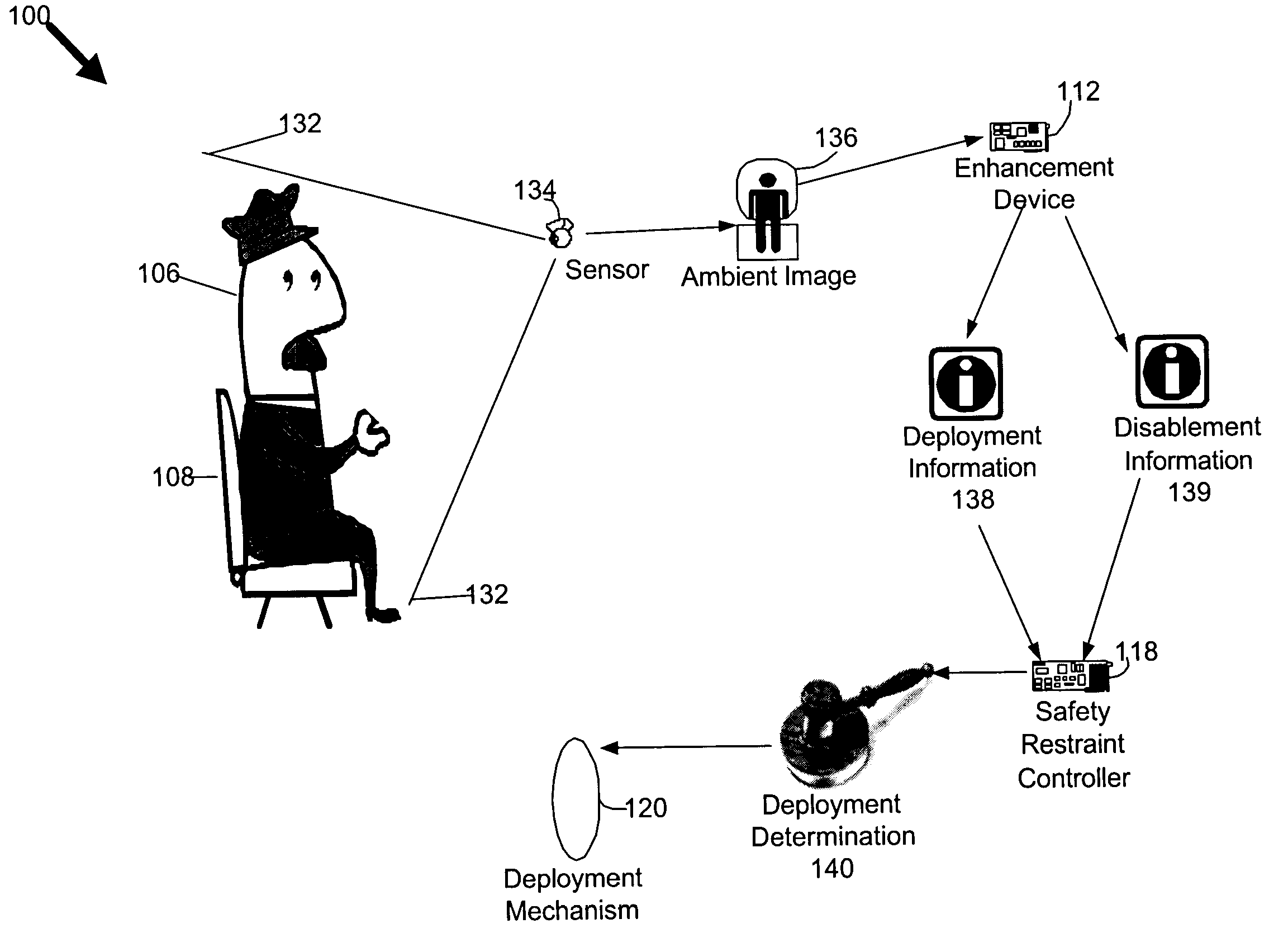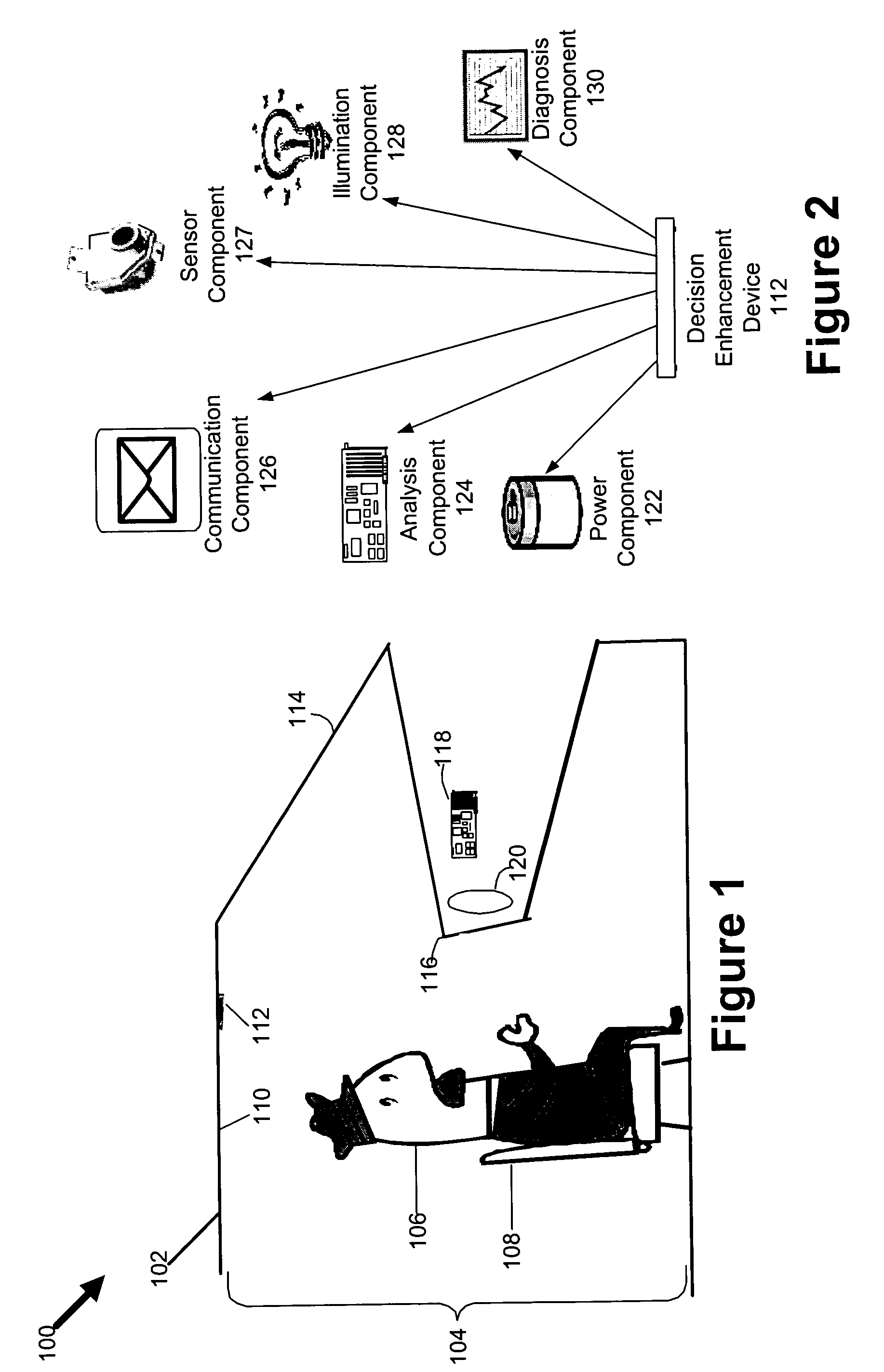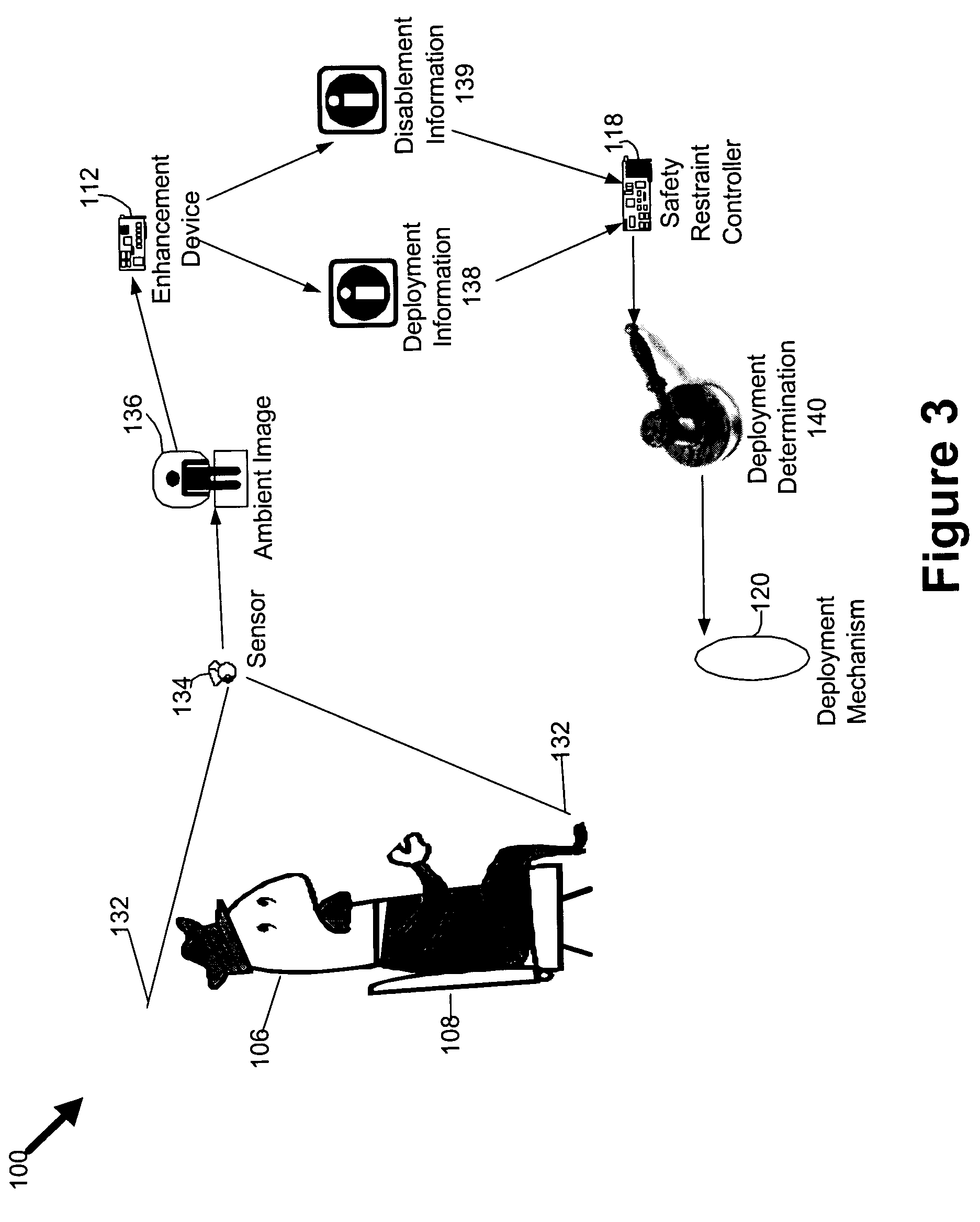Decision enhancement system for a vehicle safety restraint application
a technology for enhancing systems and vehicle safety, which is applied in the direction of pedestrian/occupant safety arrangements, instruments, and vehicles that fail to fully address the interactions between the occupants of the vehicle and the internal environment of the vehicle, and the deployment of airbags is not desirable, so as to achieve the effect of better decisions
- Summary
- Abstract
- Description
- Claims
- Application Information
AI Technical Summary
Benefits of technology
Problems solved by technology
Method used
Image
Examples
Embodiment Construction
[0055] The invention relates generally to systems and methods that pertain to interactions between a vehicle and an occupant within the vehicle. More specifically, the invention is a system or method for enhancing the decisions (collectively “decision enhancement system”) made by automated vehicle applications, such as safety restraint applications. Automated vehicle systems can utilize information to make better decisions, benefiting vehicle occupants and their vehicles.
I. Introduction of Elements
[0056] A. Environmental View for a Decision Enhancement System
[0057]FIG. 1 is an environmental diagram illustrating one embodiment of a decision enhancement system (the “system”) 100 being use within the interior of a vehicle 102. Different embodiments of the system 100 can involve a wide variety of different types of vehicles 102. In a preferred embodiment, the vehicle 102 is an automobile and the automated application being enhanced by the intelligence of the system 100 is a safety r...
PUM
 Login to View More
Login to View More Abstract
Description
Claims
Application Information
 Login to View More
Login to View More - R&D
- Intellectual Property
- Life Sciences
- Materials
- Tech Scout
- Unparalleled Data Quality
- Higher Quality Content
- 60% Fewer Hallucinations
Browse by: Latest US Patents, China's latest patents, Technical Efficacy Thesaurus, Application Domain, Technology Topic, Popular Technical Reports.
© 2025 PatSnap. All rights reserved.Legal|Privacy policy|Modern Slavery Act Transparency Statement|Sitemap|About US| Contact US: help@patsnap.com



